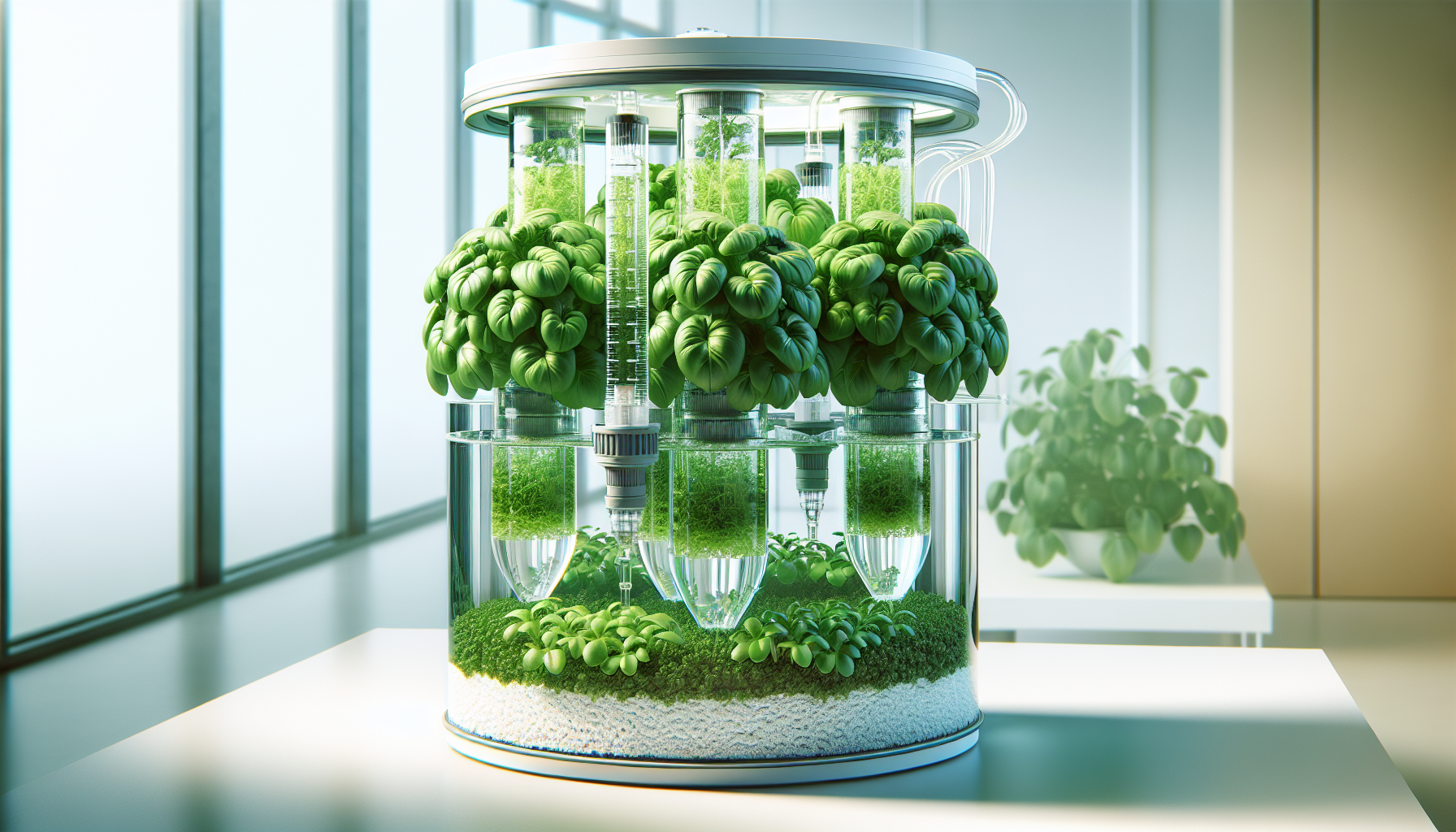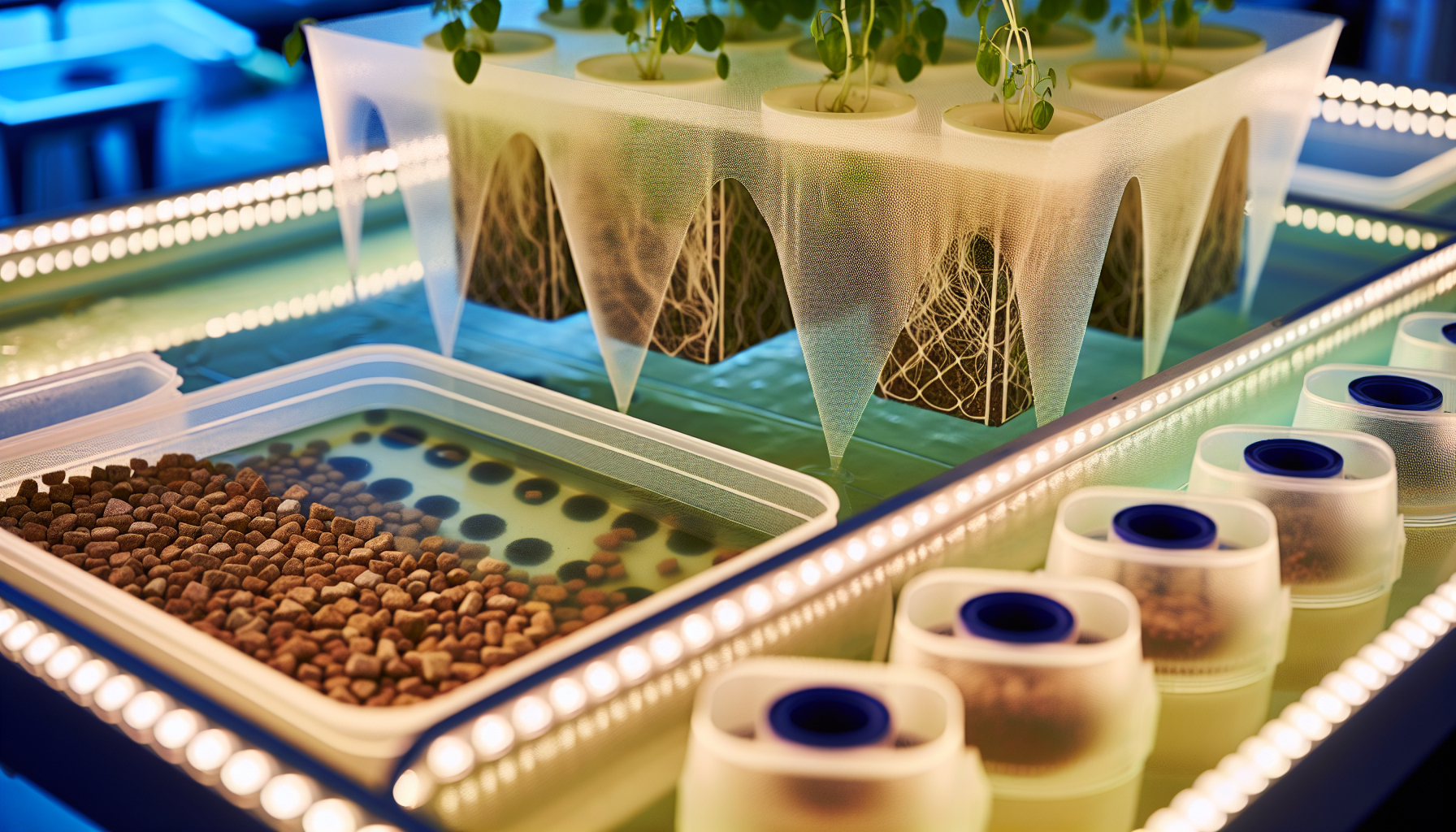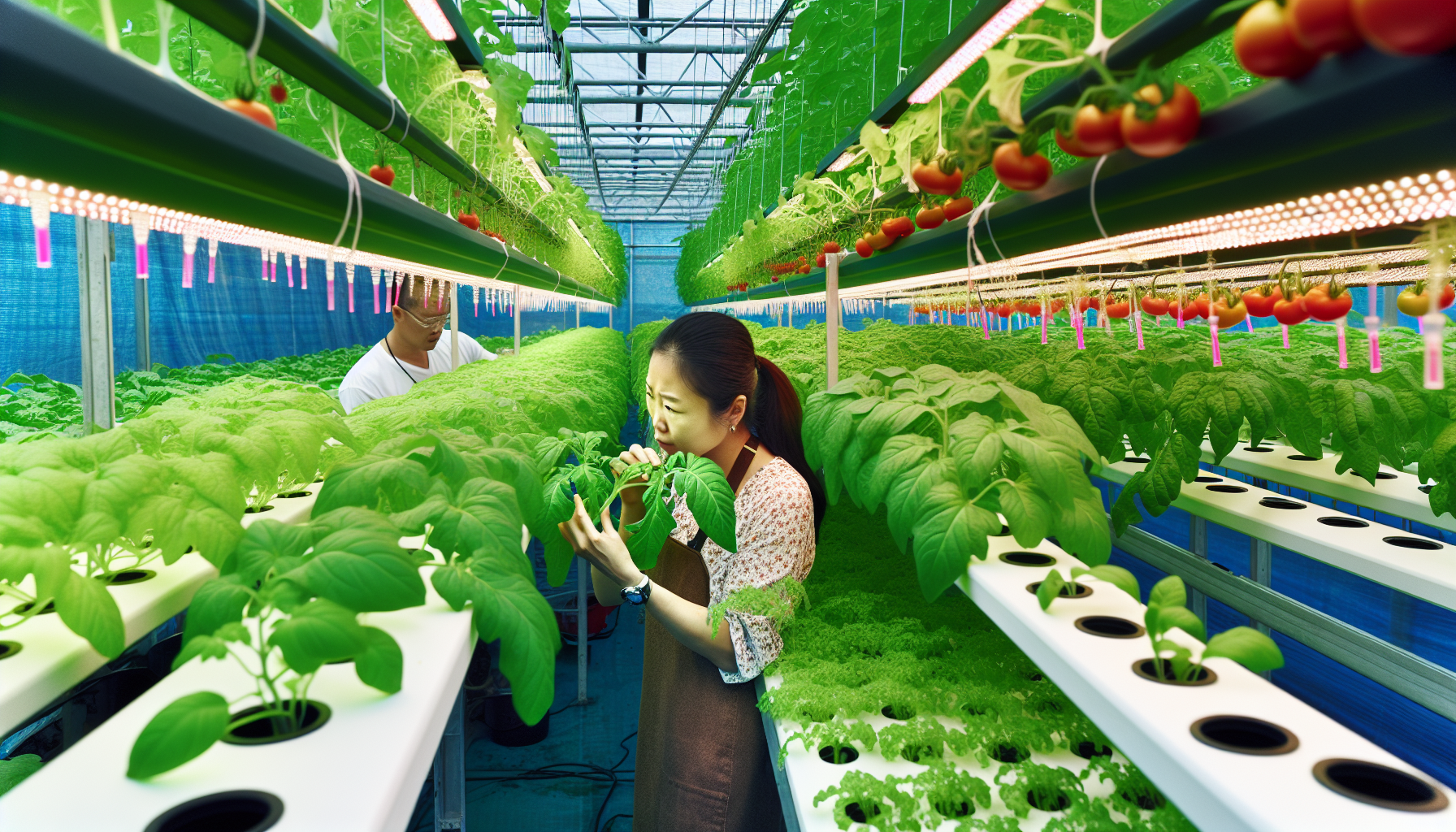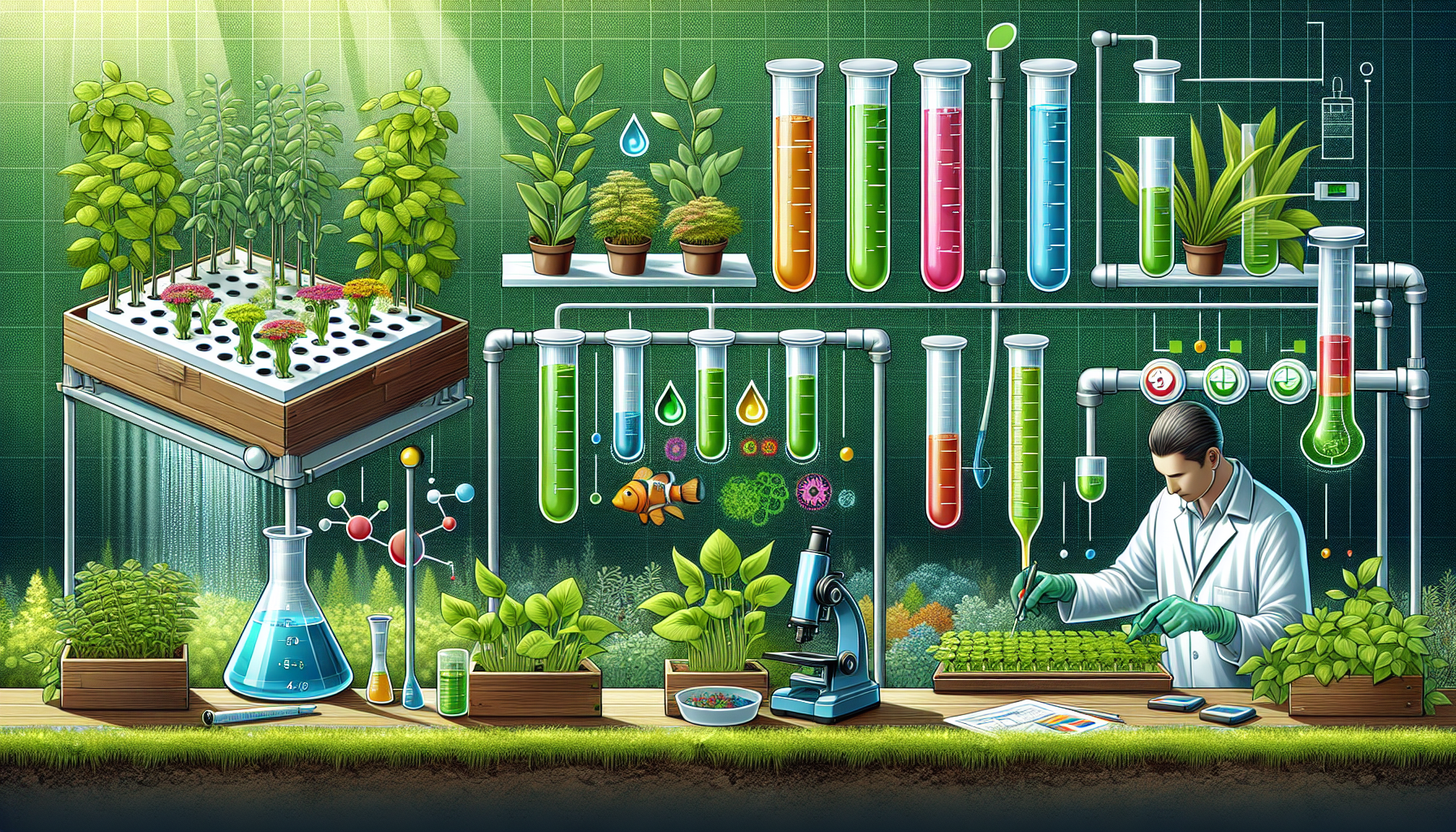Sitewide Sale: Use code Get5Nutra for 5% OFF all products. FREE shipping & 30-Days Hassle-Free ReturnsShop Now
What if you could grow plants faster, save water, and have fresh produce all year round? Hydroponic Gardening systems make this possible. They ditch soil, using water and nutrients to fuel plant growth. From setup to harvest, our guide demystifies the hydroponic system for beginners and seasoned gardeners alike, revealing the science and simplicity behind the roots of future farming.
Hydroponics is a soilless cultivation method utilizing water, nutrients, and a growing medium to grow plants more efficiently, often resulting in higher yields and greater environmental control.
Successful hydroponic systems require various components, including reservoirs, grow trays, nutrient solutions, proper aeration, and a selection of suitable growing media for optimal plant growth and maintenance.
Hydroponic gardening offers numerous advantages such as reduced water usage, year-round crop production, space efficiency, and higher growth rates, but requires vigilant system selection, pH and nutrient monitoring, and issue prevention for success.

Hydroponics is an intriguing fusion of scientific principles and natural processes. Derived from the Greek terms ‘hydro’ for water and ‘ponos’ for work, hydroponics underscores its reliance on water to enhance plant growth. Essentially, a hydroponics system cultivates plants by employing nutrients and a substitute growing medium rather than traditional soil. This approach enables meticulous regulation of environmental variables such as temperature and pH levels, ensuring that plants have optimum access to both nutrients and hydration.
In place of soil, hydroponic systems provide stability for the plants in a carefully controlled setting while facilitating nutrient absorption. To anchor down plant roots within these systems, various substrates are utilized including matrix media within ZipGrow Towers or alternatives like Coco Coir, rockwool or foam inserts. Plants receive their essential nourishment via solutions often formulated with salt-based artificial nutrients dissolved in water. Available either as dry compounds or pre-mixed liquids. As a consequence, this direct supply chain between water/nutrients to the plants themselves provided by hydroponic systems leads to more efficient plantation development and typically enhanced harvests compared to traditional planting methods.

A flourishing hydroponic garden emerges from the seamless integration of several intricate elements. Every component is essential for ensuring a smoothly functioning system. The water reservoirs are central, holding the vital nutrient solution that feeds the plants.
Plants rest in grow trays or channels which not only offer support but also guide the life-giving nutrient solution to their roots. Positioned within these structures are net pots, unique containers created for use in hydroponic systems that allow excess water to drain while simultaneously delivering generous amounts of oxygen and nutrients to plant roots.
Also Read :
In hydroponic systems, the nutrient solution takes centre stage as it serves as the primary source of nourishment for plants, essentially replacing soil. This allows hydroponic growers to meticulously manage both the nutrient concentrations and pH levels within their systems, leading to plant cultivation that is not only more robust but also yields a higher output. The components of an adequately balanced nutrient mixture in these setups include:
Vital macronutrients such as nitrogen, phosphorus, and potassium
Secondary nutrients include calcium, magnesium, and sulfur
A suite of micronutrients like iron, manganese, zinc, copper, boron, molybdenum, and chlorine
Together these elements are integral in fostering healthy plant development.
Hydroponic farmers craft their nutrient solutions by blending water with this array of macro and microelements based on certain protocols or specific formulas. They can opt for pre-formulated mixes which offer simplicity or construct custom blends tailored to cater precisely to individual crop requirements. In most instances within hydroponic settings, the replenishing cycle for these mixtures falls between every one to two weeks. However, this regimen may be adjusted taking into account various stages in plant maturation or responding directly according to observations related to actual mineral uptake.
Plants, much like humans, require air for survival. Optimal aeration is crucial for maintaining:
the health of plant roots
activity of beneficial microbes
degradation of excess nutrients
balance within the system as a whole
This results in an environment that greatly promotes plant growth.
By introducing fine bubbles into the nutrient solution with air stones and air pumps, dissolved oxygen levels are significantly raised. This increase is vital for plants to absorb nutrients effectively and carry out their metabolic processes efficiently.
Ensuring sufficient oxygenation through adequate supplies prevents root rot – often caused by low levels of oxygen around the roots. Particularly within a DWC (Deep Water Culture) setup, employing an air pump connected to an airstone provides constant fresh airflow which maintains elevated dissolved oxygen concentrations essential for vigorous root growth.
Despite the absence of soil in hydroponic systems, a suitable medium for securing plant roots is still essential. This growing medium serves as both an anchor and support system for plants, offering an optimal mix of oxygen and water to facilitate healthy growth. It is crucial to sterilize the chosen medium adequately before its use to avoid any potential contamination. Among the various options available that cater differently in terms of root support, moisture retention, and oxygen provision are:
Rockwool
Coconut coir
Perlite
Vermiculite
Peat moss
Growstones
When it comes down to choosing an appropriate growing medium for your hydroponics setup, consider aspects such as the specific needs of the plant species being grown, compatibility with your chosen type of hydroponic system design, and finding a good balance between holding water effectively yet also allowing sufficient air circulation around roots. Some reliable mediums used widely within these agricultural systems include:
Rockwoil
Coco coir
Perlite
Vermiculite
Expanded clay pellets.
The utilization or recycling process involves thorough cleaning and re-sanitization which makes them ready for reuse thereby enhancing sustainability measures related directly to this method’s cultivation practices (hydrophonics).

In the same way that traditional gardening offers a variety of methods, hydroponic systems also present several different types with their own set of advantages and disadvantages. There are six primary types:
Ebb and flow systems
Drip systems
Deep water culture
Nutrient Film Technique (NFT) systems
Wick systems
Aeroponic systems
Selecting an appropriate system is critical to the success of your hydroponic garden as it can greatly affect how well certain plants grow based on their specific needs and the resources you have at hand.
For example, leafy greens and herbs are particularly suited for NFT since they require minimal space for roots to spread out while various drip system designs accommodate a broader range of plant species effectively.
Hydroponic gardening offers an array of methods, but Deep Water Culture (DWC) is particularly noted for its straightforwardness and effectiveness. Plants in a DWC system dangle their roots directly into a nutrient-rich solution which is perpetually aerated by means of an air pump connected to an air stone. This constant supply of oxygen provided by the air pump to the plant roots is essential for their health and vigorous growth.
The appeal of DWC systems lies in their simplicity similar to that found within wick systems. It relies on a few moving parts, uses large reservoirs which lend more stability, and negates the necessity for watering timers—all contributing factors towards reduced maintenance needs and ease of use. Enhanced access to nutrients coupled with abundant oxygen leads plants in two setups toward rapid development and generous yields, making this approach suitable for cultivating various plant types from verdant leafy vegetables all the way up to substantial fruit-bearing species.
Ebb and flow systems, interchangeably termed flood and drain systems, function by rhythmically flooding the plant’s growing area with a nutrient solution to a specific level before letting it recede back into its container. The operation is governed by a timed water pump which orchestrates the intervals of flooding meticulously. This ensures that during the ebbing phase or dry cycle of the system, plants’ roots receive an optimal balance of nutrients along with necessary oxygen.
Known for their versatility in accommodating different planting layouts, ebb and flow setups can support an extensive variety of plants. Even some varieties of root vegetables can thrive within these frameworks. Their adaptability has led to them becoming favourites among both casual home gardeners and professional cultivators alike due to their straightforward yet productive nature.
Constructing these hydroponic gardening solutions proves economical as they frequently employ inexpensive materials—including everyday objects such as buckets—that are easily repurposed into functional components for these low-cost yet efficient flow systems.
Aeroponic systems advance the concept of hydroponics by suspending the roots in the air while intermittently or continuously misting them with a nutrient solution. This approach eliminates any soilless growing medium and can accelerate plant growth due to better exposure to oxygen and nutrients. In aeroponics, specialized nozzles spray or fog the roots with this nutrient-rich solution on either a cyclical basis or non-stop, ensuring that all parts of the root system receive an adequate supply.
Implementing these high-tech setups requires more sophisticated construction know-how and upkeep capabilities. A critical concern is achieving full coverage of each plant’s root system through mist nozzles—this becomes increasingly challenging as plants develop larger root structures. To effectively atomize and disperse the nutrient solution across extensive root systems, specific advanced equipment like precision spray nozzles are essential for the proper function of an aeroponic setup.

Hydroponic gardening presents a host of impressive advantages, such as:
The ability of hydroponic gardens to conserve water is significant To conventional soil agriculture. For instance, aeroponic systems are extraordinarily efficient, often reducing water usage by up to 95 per cent through recycling within the system.
Hydroponic systems offer the benefit of generating micro-climates that tailor conditions ideally suited for different crops in one location.
Unlike traditional farming limited by seasonal changes, crops cultivated within hydroponic setups can yield consistent and all-season harvests.
Plants grown using hydroponics, particularly leafy greens like lettuce or spinach, often display accelerated growth rates—potentially doubling their pace compared with soil-based counterparts. Enhanced control over environmental factors leads to not only greater crop yields, but also reduces losses due to pests and diseases in these controlled garden spaces. Leveraging vertical farming techniques Optimizes space utilization—a key feature of hydroponic gardening that makes it especially valuable for densely populated cities or areas where land is at a premium. By boosting efficiency beyond what’s typically achieved through organic earthbound methods, hydroponic systems pave the way towards sustainable agricultural methodologies.

Excited about establishing your hydroponic garden? Embarking on this adventure requires careful consideration and detailed preparation. It’s crucial to choose an appropriate system for the area you have, keep a close watch on pH and nutrient levels, and tackle typical challenges like combating algae growth and maintaining nutrient balance. With diligent oversight and access to proper tools, be confident that you’ll reap the rewards of your efforts with bountiful harvests of fruits (and vegetables!).
The first step in establishing your hydroponic garden is selecting an appropriate system. The decision hinges on various elements such as the species of plants you intend to cultivate, the space at your disposal, and how much customization you need. If working with a confined area, opt for a small-scale hydroponic setup that can be placed on countertops or shelves. Vertical arrangements are particularly efficient for space conservation. When choosing a system for areas with limited room, consider both the ultimate size and growth tendencies of the intended plants.
Another vital consideration is the light requirements necessary to foster plant health within your chosen set-up—sometimes necessitating additional lighting fixtures. Aeroponic systems come in horizontal and vertical layouts. A vertical aeroponic system not only conserves valuable square footage but also leverages gravity to distribute moisture more effectively across plant roots. It’s important to recognize that whichever system type you select will play a pivotal role in determining whether your garden flourishes or falters.
Continual vigilance of pH and nutrient levels is essential once plants begin to flourish within the hydroponic system. For most plants nurtured in such systems, a slightly acidic environment with a pH ranging from 5.5 to 6.5 is considered ideal, as it enhances their ability to take up nutrients efficiently. This delicate balance can be disrupted by factors including plant absorption rates and organic material buildup. Thus regular checks are necessary.
For maintaining these crucial parameters within an optimal range, growers may employ various tools like liquid test kits or pH meters, which help track the current status of your system’s water chemistry. To tweak the pH values accordingly one might use specific commercial products designed for raising or lowering acidity (‘pH down’ or ‘pH up’) or household items such as vinegar for slight adjustments when needed. In tandem with monitoring pH levels, you must also pay close attention to ensuring that nutrient strength stays at appropriate levels – often accomplished using speciality meters dedicated for assessing nutritional content in solutions.
Despite its multitude of benefits, hydroponic gardening, like any gardening technique, presents its set of challenges. One common issue is algae growth, which can be managed by careful light exposure and water temperature management. Covering the hydroponic system’s water reservoir and growing medium to block out light is necessary for algae control. Maintaining cool water temperatures and avoiding overexposure to sunlight can also inhibit algae proliferation in hydroponic systems.
Another critical issue in hydroponics is nutrient dosing. Here are some key points to consider.
Careful dosing of nutrients is essential to prevent root zone damage due to the lack of buffering provided by soil in hydroponic systems.
Regular changes in the nutrient solution in hydroponic systems prevent nutrient imbalances and the accumulation of salts and other waste products.
Water quality is also crucial in hydroponics and can be managed through filtration or treatment systems.
To sum up, the innovative method of hydroponic gardening presents an efficient and environmentally conscious approach to cultivating plants with impressive results. Selecting from systems such as deep water culture, ebb and flow, or aeroponics brings forth distinct advantages including reduced water consumption, the ability for continuous harvesting throughout the year, accelerated plant growth rates, and adherence to sustainable methods. Despite necessitating meticulous organization, observation and problem-solving skills upfront—the outcome justifies the investment. Consider embarking on your venture into hydroponics now—why delay?
For novices in hydroponics, Deep Water Culture (DWC) stands out as the most straightforward system to use. It consists of immersing plant roots in a solution that is both oxygenated and abundant in nutrients, which simplifies construction and upkeep for at-home gardeners.
Three distinct hydroponic systems exist: Deep Water Culture (DWC), Nutrient Film Technique (NFT), and Drip Irrigation. Each of these systems offers unique benefits and is designed to accommodate various plant species and environmental growing conditions.
Specific equipment is necessary to establish a hydroponic system.
For DIY enthusiasts, the wick system offers an ideal entry point into hydroponics due to its simplicity in construction and cost-effectiveness, as it utilizes materials that are easy on the budget.
Utilizing a growing medium instead of soil, hydroponic gardening is an innovative technique that involves nurturing plants with just water and nutrients. This method facilitates meticulous management of environmental factors which enhances the efficiency of plant growth.
Grow 100 planting sites, monitor ph levels, water temperature, water levels, and control light and water cycles.
© Copyright 2024 Nutraponics. All Rights Reserved.